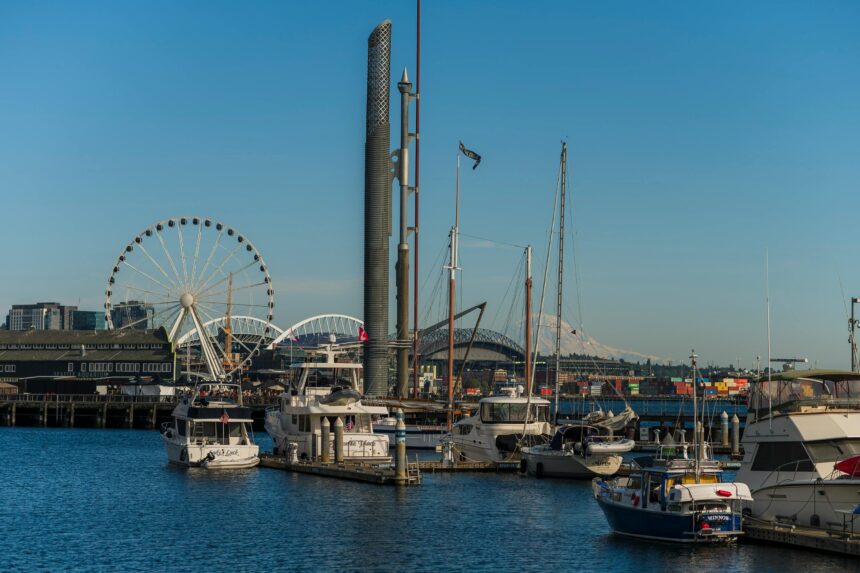What Veneajelu Means Today
In Finland, veneajelu is more than a pastime — it’s an essential part of how people connect with their landscapes, seasons, and way of life. The word veneajelu literally translates to “boat ride,” but it reflects a broader tradition that includes lake cruises, island-hopping adventures, peaceful rowing excursions, and scenic journeys through Finland’s vast network of waterways. With over 180,000 lakes and countless islands, the country offers endless opportunities for those who want to experience nature from the water.
Whether you’re planning a quiet afternoon on a traditional venet (wooden rowing boat) or a full-day trip exploring the Helsinki shoreline, a veneajelu blends relaxation with discovery. It’s a way to see Finland’s landscapes from a fresh perspective — gliding past pine-lined shores, spotting wildlife like the Saimaa ringed seal, or simply enjoying the calming rhythm of the waves. Over time, veneajelu has evolved from a purely local tradition into a popular activity for travelers seeking authentic outdoor experiences in Northern Europe.
Top Destinations for Veneajelu — Where to Go
Choosing the right location for your veneajelu can shape the entire experience. Finland is a land of water, and each region offers a slightly different version of this tradition. Helsinki is one of the most popular starting points — here, you can enjoy short boat rides along the capital’s shoreline or head out into the nearby archipelago. The city’s proximity to dozens of islands makes it perfect for half-day or evening veneajelu trips, often with options for picnics or swimming stops along the way.
If you’re after dramatic scenery, the Turku archipelago should be on your list. With over 20,000 islands, it’s ideal for island hopping, wildlife watching, and multi-day boating adventures. Lake Saimaa — the largest lake in Finland — is another top spot, especially for nature lovers. Its calm waters and forested shores create a peaceful backdrop for veneajelu tours, while the possibility of spotting rare wildlife adds to the excitement. And if you prefer a quieter experience, regions like Lakeland or Oulu offer less crowded waters and a slower pace, perfect for families or first-time visitors.
How to Choose the Right Boat
The type of boat you choose for your veneajelu can significantly affect your comfort, speed, and the kind of adventure you’ll have. Traditional venet — small, wooden rowing boats — are ideal for short, peaceful rides or exploring narrow waterways. They’re quiet, eco-friendly, and deeply tied to Finnish boating culture. For those who want more flexibility and speed, motorboats are a popular choice. They allow you to cover more distance in less time, making them ideal for exploring large lakes like Saimaa or longer archipelago routes.
Sailing boats are perfect for those who enjoy a slower pace and want to immerse themselves fully in the rhythm of the water. They’re often used for full-day or multi-day trips and can accommodate small groups or families. Electric boats are an increasingly popular option too — they combine sustainability with convenience, producing no emissions and minimal noise. Whether you’re booking a small canoe for a solo outing or chartering a luxury yacht for a special event, the right vessel depends on your preferences, group size, and the kind of experience you’re seeking.
Booking & Rental — Where to Book, Price Ranges, and Tips
Booking a veneajelu in Finland is easier than ever, with plenty of options ranging from local rental companies to full-service tour operators. If you’re planning a simple boat ride, you can often rent a venet or motorboat by the hour from small marinas or waterfront shops. Prices for basic rentals usually start around €30–€50 per hour, but expect to pay more if you’re booking larger boats, guided tours, or multi-day trips. For example, yacht charters and private sailing tours can range from €300 to €1,000 per day, depending on size and season.
When booking, it’s worth asking about insurance, safety equipment, and local navigation support. Most reputable operators provide life jackets, emergency contacts, and basic navigation briefings before departure. If you’re planning a longer trip, check whether fuel, docking fees, or guide services are included in the price. One insider tip: booking in advance during summer (June to August) can save you money, as last-minute prices tend to spike. And if you’re booking online, don’t hesitate to message operators directly — many are willing to offer discounts for weekday rentals or small groups.
Sample Itineraries — Half-Day to Multi-Day Adventures
Planning your veneajelu itinerary ahead of time ensures you get the most out of your trip. A half-day tour is perfect for first-timers or those short on time. For example, you can start with a leisurely boat ride along the Helsinki coastline, stop for a picnic on one of the nearby islands, and return by sunset. This type of trip usually lasts three to four hours and focuses on sightseeing, photography, and relaxation.
If you’re up for a full-day trip, consider exploring the Turku archipelago. Start in the morning, hop between small islands, enjoy lunch at a local café, and finish with an evening swim. Multi-day veneajelu adventures, on the other hand, are all about slow travel. You can spend several days navigating through Lake Saimaa, anchoring overnight at remote islands, and exploring Finland’s wild landscapes at your own pace. Some tours even combine boating with other activities, such as guided nature walks, sauna experiences, or fishing excursions — adding depth and variety to your trip.
What to Bring — Essential Packing Checklist
A veneajelu is most enjoyable when you’re well-prepared. Packing the right gear can make the difference between a comfortable, memorable day and one that’s stressful or cut short. Start with the basics: weather-appropriate clothing, a waterproof jacket, and comfortable shoes with good grip. Even in summer, Finnish weather can change quickly, so it’s smart to pack a light sweater or windbreaker. Sunglasses, sunscreen, and a hat are also must-haves — the reflection from the water can intensify sunlight, and it’s easy to underestimate UV exposure while boating.
Beyond clothing, bring essentials like water, snacks, and a small first aid kit. If you’re planning a longer veneajelu or overnight trip, pack extra layers, insect repellent, and a power bank for your devices. Many travelers also bring binoculars for birdwatching or a camera to capture Finland’s breathtaking landscapes. And don’t forget local navigation tools — a printed map or downloaded offline map app is handy in areas with limited signal. With the right preparation, you can focus fully on enjoying the experience without worrying about what you left behind.
Safety and Regulations — What Every Passenger Should Know
Safety should always be a priority on any veneajelu. Finland’s waters are generally safe and well-marked, but it’s important to understand basic boating rules and local regulations before you head out. Every passenger should wear a life jacket — most rental companies provide them, but double-check the fit and condition. Weather awareness is also crucial. Conditions on open water can change rapidly, so check forecasts and avoid going out if strong winds or storms are expected.
If you’re operating the boat yourself, make sure you’re familiar with Finnish boating laws. Speed limits vary depending on the waterway, and many areas — especially near harbors or nature reserves — have strict no-wake or no-entry zones. Alcohol limits for boat operators are also enforced, similar to road driving laws. Finally, always have a safety plan. Share your route with someone onshore, keep a charged phone or VHF radio on board, and know how to contact emergency services. Following these precautions ensures your veneajelu remains safe, enjoyable, and stress-free.
Accessibility and Inclusive Options for All Travelers
One of the strengths of Finland’s veneajelu culture is how accessible it has become. Many tour companies now offer boats designed for wheelchair users, with ramps, stable decks, and onboard assistance. Electric boats and guided tours often feature easy boarding options, making them ideal for seniors or anyone with mobility challenges. If accessibility is a key concern, contact operators in advance — most are happy to provide details and make arrangements that suit your needs.
Families with young children also have plenty of choices. Many boats come equipped with safety gates, shaded seating, and life jackets for all ages. For travelers with sensory sensitivities, smaller group tours or private charters can offer a quieter, more controlled environment. The goal is to ensure everyone — regardless of age, ability, or experience level — can enjoy the peaceful and rewarding experience of a veneajelu on Finland’s waters.
Budgeting Tips and Cost-Saving Strategies
A veneajelu in Finland doesn’t have to be expensive. With a little planning, you can enjoy the experience without overspending. One of the easiest ways to save is by choosing shared tours instead of private charters. Group trips are often significantly cheaper while still offering beautiful routes and guided commentary. Booking during shoulder seasons — late spring (May) or early autumn (September) — can also cut costs, as rental rates and tour prices are usually lower outside peak summer.
If you’re confident operating a boat yourself, renting a small vessel for a few hours is typically more affordable than hiring a guide. Bringing your own food and drinks instead of relying on onboard catering can also reduce costs, especially for longer trips. Finally, keep an eye out for package deals that combine veneajelu with other activities like fishing, sauna visits, or island tours — these often offer better value than booking each experience separately. A thoughtful budget doesn’t mean compromising on quality; it simply ensures you get the best possible experience for your money.
Frequently Asked Questions (FAQ)
Q1: Do I need boating experience to enjoy a veneajelu?
No experience is required for guided tours or group trips — they’re designed for beginners. If you plan to rent and operate a boat independently, basic navigation knowledge is helpful, but many rental companies offer brief training before departure.
Q2: What’s the best time of year for a veneajelu in Finland?
The most popular months are June to August, when weather conditions are warm and daylight hours are long. However, May and September can also be excellent choices if you prefer fewer crowds and lower prices.
Q3: Are veneajelu tours suitable for children?
Absolutely. Many operators cater specifically to families, providing safety gear and kid-friendly routes. Always check age requirements before booking.
Q4: Can I bring pets on board?
Some boat rental services and tours allow pets, especially private charters. Always confirm the policy in advance to ensure a smooth experience.
Q5: What happens if the weather changes suddenly?
Operators monitor conditions closely and will cancel or reschedule tours if safety is a concern. If you’re boating independently, return to shore immediately if weather deteriorates.
Conclusion — Embracing the Finnish Way of Water
A veneajelu is far more than a pleasant boat ride — it’s a meaningful way to connect with Finland’s natural beauty, traditions, and seasonal rhythms. Whether you’re gliding through the serene waters of Lake Saimaa, weaving through the Turku archipelago, or enjoying a sunset cruise near Helsinki, every veneajelu offers a new perspective on the country’s landscapes and lifestyle.
By choosing the right boat, planning ahead, and respecting safety guidelines, anyone — from first-time visitors to seasoned travelers — can make the most of this timeless activity. With accessible options, budget-friendly choices, and countless scenic routes to explore, veneajelu remains one of the most rewarding experiences in Finland. It’s an invitation to slow down, breathe deeply, and see the country from the gentle rhythm of the water — a tradition that continues to define the Finnish way of life.
For more quality, informative content, visit writewhiz






